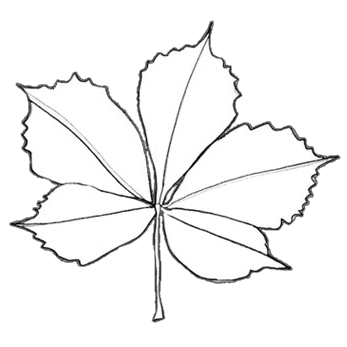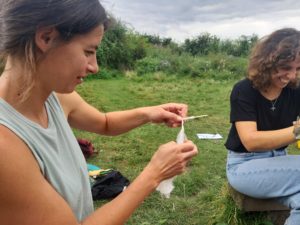Prickly and stingy plants so often get a bad wrap- but Urban Outdoors had a chance to take a closer look at nettles this weekend and learned how to craft these wonderful plants into the most beautiful and soft textile fibres and try our hands at spinning.
Nettles have been crafted into cordage and textiles since the Iron age, they were used to make clothes, ties for bags, and even fishing nets, the cordage is so strong and versatile.
That’s over 3000 years of mostly women picking, processing, and spinning nettles whilst on the move carrying out all the other daily tasks of a subsistence lifestyle. Its not fast and it’s not easy, but it is satisfying!!!!
Led by bridget from beekaymakes.co.uk, we foraged for 5 foot nettles at Gillespie Park nature reserve. After removing the stinging leaves, and hairs on the stalks, eating some of the seeds (surprisingly nice & nutty!) We split the stems to reveal the nettle fibre or ‘bast’ inside. This bast can be stripped out by hand and finger twisted into cordage, single or double for extra strength for use as cord, fishing nets, anything you can imagine needing tying together!
To get the softer nettle fibre the harvested nettle stems need to be left for three weeks in bundles on the damp ground to ret (controlled rotting). This rotting helps the pectin in the stalks break down and the fibres be more easily removed from the woody stems.
The fibres are so fine, delicate and soft that unscrupulous silk merchants used to add them to their silk to bulk up the weight for sale!
After carding (with dog brushes!) The nettle fibre, we all let out a gasp as we saw the fibres forming into a soft marshmallow of spinable wool – it’s just SO satisfying!!!
The fluffy fibres can then be hand spun on a traditional spindle ( we used a Turkish spindle) creating beautiful fine, soft yarn to be woven on a loom.
You really couldn’t get a more sustainable and satisfying textile, if you have ALOT of time and patience!
Thanks to Bridgit at BeeKay Makes for a wonderful introduction to this ancient craft! I’m hooked!!!!





